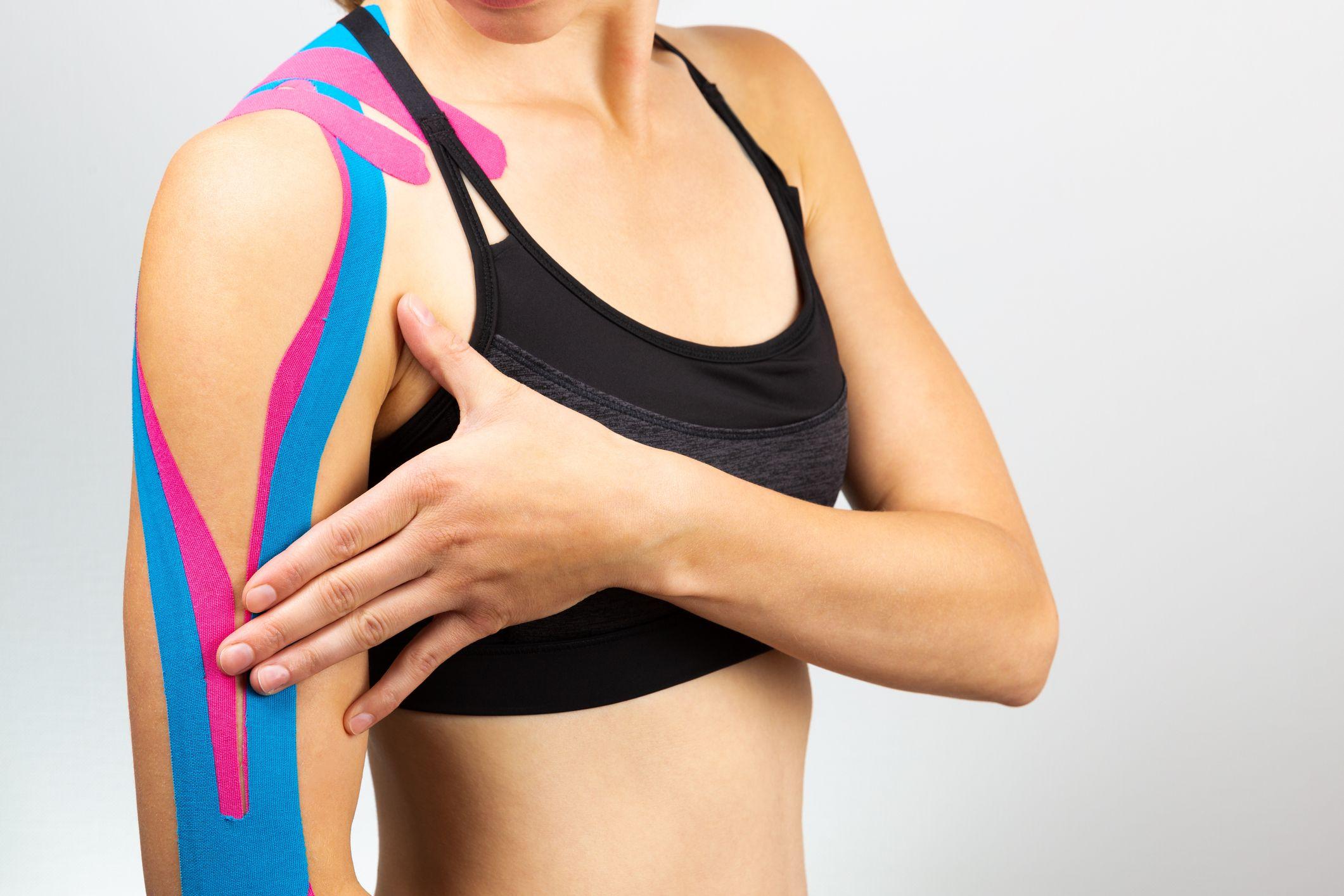Kinesiology is a study of movement. It uses muscle monitoring techniques to identify issues with the body’s performance and efficiency. Kinesiology aims to maintain balance in the muscles and tissues. Kinesiology taping, or kinesio tape, aims to do just that. Kinesio tape is a modern type of therapeutic tape that is applied to the skin to treat injuries or other conditions. The way it is applied, and the location it is applied to, depends on the type of support your body needs. It has commonly been used by athletes for sporting injuries. However, kinesiology tape has become a more widespread treatment option in recent years.
What is kinesio tape?
The first kinesio tape product was branded as, “Kinesio Tape Tex.” It was developed in the 1970’s by a Japanese chiropractor, Dr. Kenzo Kase. He created it as an alternative to traditional athletic tapes available at the time. It is a very stretchy tape made out of fabric, usually made out of cotton, or a cotton blend. Additionally, the heat activated adhesive is also waterproof and can be worn during exercise and showering. With proper application, the tape should be able to stay attached to the skin for 3-5 days.
How does kinesio tape work?
The idea behind kinesio tape is to mimic the physical qualities of skin in terms of elasticity and thickness. When it is applied to the body, either the skin or tape is stretched. The amount stretched depends on the goal of the kinesio tape. This stretching causes the tape to pull at the skin to slightly lift it. The lifting of the skin is believed to provide many benefits.
It helps to support the body by relieving pressure in the area between the muscles and inner layer of skin. This leads to regeneration of tissues and reduced swelling. It also improves the circulation of blood and lymphatic fluids to the area of injury, which helps with drainage and healing the injury more quickly.
Kinesio tape also may affect your nerve receptors. These receptors send information to your brain about touch, pain, pressure, and temperature in the muscles, joints, and skin. When the tape reduces pressure on these nerves, it can help in decreasing pain and muscle spasms. It does this by altering the pain signals that are sent to the brain.
In addition to treating injuries, tape is also used to support performance. This makes it a common treatment for athletes. It can be used to improve joint alignment and posture. It can also help “wake up” sleeping muscles by applying pressure, and this improves muscle function and performance.
Types and application of kinesio tape
Kinesio tape comes in all types of shapes and sizes. For example, athletic performance vs. pain relief. The tape can come in full rolls, precut strips, and precut strips cut in specific shapes for certain body parts. The precut, specifically shaped tape comes in Y, I, X, fan, web, or donut patterns.
Taping can be done by yourself at home, but it is best to consult with a physical therapist first. It may be difficult to know how far to stretch the tape, or how to stretch it in general. They will be able to teach you how to properly apply it.
Uses
Physical therapists can use kinesio tape for a wide variety of reasons.
- Pain management after an injury.
- Reduction of scar tissue after surgery or trauma.
- Increased circulation of fluids and blood.
- Decreased inflammation.
- Muscle inhibition or facilitation.
- Improved athletic performance.
- Better posture and stability.
- Improved muscle function and strength.
The most common locations to apply kinesio tape include:
- Wrists and elbows.
- Shoulders and back.
- Hamstrings and knees.
- Shins and calves.
Who can benefit from kinesio tape?
- People working jobs that involve heavy physical labour.
- Athletes and physically active people wanting to improve their performance.
- Poor posture.
- Joint, muscle, or tendon pain.
Precautions
Although kinesio tape is a relatively safe treatment option. However, it is not suitable for everyone. It is important to consult with your physician or a physiotherapist first. People with the following conditions should avoid using kinesio tape.
- Skin allergies. Some people may be sensitive to the adhesives or latex in the tape.
- Open wounds – Applying the tape to an open wound may lead to bacteria getting into the wound.
- Cancer – Kinesio tape increases blood flow, and increasing blood flow to a cancerous growth can be dangerous.
- Diabetes – For some people with diabetes, they may suffer from a condition that affects the sensation in their legs and/or arms. With the reduced sensation, it may be difficult to tell if the tape is causing a problem.
- Deep vein thrombosis – This is a condition where a blood clot forms deep in a vein. Decreasing the pressure in that area with tape may cause the clot to become dislodged and travel to a lung artery.








